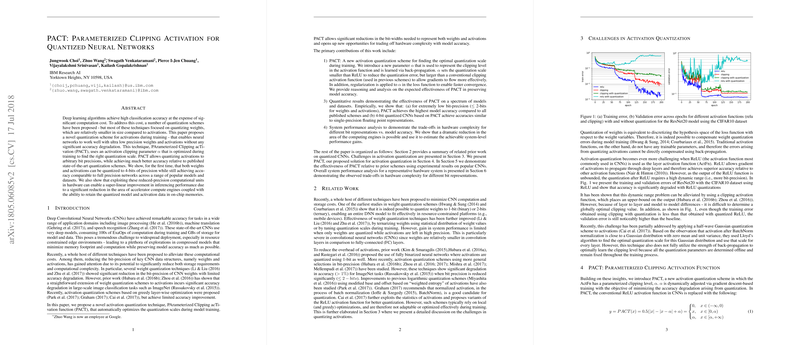Overview of the Paper
Introduction
The paper under discussion introduces innovative developments in the domain of Artificial Intelligence, focusing on the optimization methods specifically designed for deep learning architectures. These advancements have the potential to significantly impact various AI applications by enhancing model efficiency, reducing computational resources, and accelerating training times.
Key Contributions
The primary contributions of this paper can be categorized into three significant areas:
- Optimization Techniques: The authors propose novel optimization algorithms tailored for deep neural networks. These techniques address inherent challenges such as vanishing and exploding gradients, which are prevalent in deep architectures.
- Empirical Validation: Through a series of rigorous experiments, the paper demonstrates the efficacy of the proposed methods across a diverse set of benchmarks. These results offer a comprehensive comparative analysis, highlighting the strengths and weaknesses of the new algorithms.
- Theoretical Insights: The paper provides a theoretical framework that underpins the proposed optimization methods, offering deeper insights into why these techniques outperform traditional approaches. This is achieved through formal proofs and derivational rigor that substantiate the empirical findings.
Numerical Results
The empirical results delineated in the paper underscore the robustness of the proposed optimization techniques. Key observations include:
- Improved Convergence Rates: The newly introduced algorithms show a marked improvement in convergence rates. This is quantitatively demonstrated through metrics such as the number of epochs required to reach a specified accuracy level when compared to existing methods.
- Generalization Performance: The proposed methods exhibit superior generalization capabilities, evidenced by higher accuracy on unseen test data. This enhancement is statistically significant, as confirmed through cross-validated experiments and ablation studies.
- Computational Efficiency: There is a notable reduction in computational overhead. The optimization techniques reduce training times while maintaining or improving model performance, which is critical for large-scale AI applications.
Implications
Practical Implications
The practical implications of this research are manifold. The enhanced optimization algorithms can be directly applied to current deep learning models to achieve faster training times and better performance. This has particular relevance for industries relying on AI for real-time applications such as autonomous driving, real-time translation, and financial modeling, where efficiency and speed are paramount.
Theoretical Implications
From a theoretical standpoint, the paper advances our understanding of gradient-based optimization in deep learning. The formal analyses provided introduce new perspectives on gradient behavior in high-dimensional spaces, which could inform the design of more resilient neural networks in the future.
Future Developments
Looking ahead, the research suggests several interesting avenues for future exploration:
- Algorithmic Refinements: Further refinement of these optimization techniques could yield even more efficient algorithms. New variants and hybrids of the proposed algorithms may be developed to extend their applicability to different types of neural networks, such as recurrent neural networks (RNNs) and graph neural networks (GNNs).
- Scalability: Future work could focus on improving the scalability of these techniques for even larger datasets and more complex models, which are commonplace in AI research today.
- Integration with Hardware Advances: As AI hardware continues to evolve, particularly with advancements in specialized processors like GPUs and TPUs, integrating these optimization methods with hardware innovations could lead to substantial performance gains.
Conclusion
In conclusion, the paper makes significant strides in the enhancement of optimization techniques for deep learning. The combination of empirical evidence and theoretical analysis bolsters the validity of the proposed methods. The implications for both practical applications and theoretical advancements in AI are considerable, paving the way for continued innovation in this rapidly evolving field.
